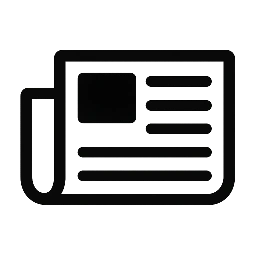Replacing a dryer vent is a home maintenance task that can improve efficiency, prevent fire hazards, and enhance appliance performance. While it is possible to handle this project independently, it requires the right tools, knowledge, and safety precautions to ensure compliance with building codes and manufacturer guidelines. Before starting, it is essential to understand the process, potential challenges, and when professional help might be necessary for your Dryer Vent.
Why It Matters
A properly functioning dryer vent ensures efficient moisture and heat removal from your laundry appliance. Faulty vents can lead to reduced dryer performance, higher energy bills, and even dangerous lint buildup, which is one of the leading causes of home fires. Additionally, poor venting can trap moisture in walls or ceilings, leading to mold growth and costly structural damage.
Common Problems
Homeowners often encounter a range of dryer vent issues, such as lint blockages, crushed ducts, disconnected joints, and damaged vent covers. In severe cases, the buildup of lint within the ductwork can ignite, posing a serious fire risk. Identifying the issue early can prevent costly repairs and potential hazards.
Key Features
Rigid metal ducts are the most efficient and fire-resistant, while Flexible Dryer Vent options offer easier installation but may trap lint more easily. Proper vent covers with bird guards and weather protection are also important to prevent pest entry and environmental damage. Always check the vent path for minimal bends and obstructions to maximize airflow efficiency.
Steps
- Disconnect Power – Unplug the dryer and, if applicable, shut off the gas supply.
- Remove Old Venting – Detach the duct from both the dryer and the wall or floor vent connection.
- Clean the Vent Path – Use a vacuum or specialized vent brush to clear lint and debris.
- Measure and Cut New Ducting – Ensure proper length and fit without excessive bends.
- Install the New Vent – Securely attach with clamps or foil tape (avoid screws inside the duct).
- Attach the Exterior Vent Cover – Ensure it is weather-sealed and pest-proof.
- Reconnect and Test – Plug in the dryer, run it on an air-fluff cycle, and check for airflow at the exterior vent.
Safety
Always wear gloves, eye protection, and a dust mask when dealing with lint buildup. If your dryer is gas-powered, ensure the gas line remains undisturbed and leak-free. Compliance with local building codes is essential, and if you are uncertain about installation steps, it is best to hire a certified technician.
“Dryer vent installation is not just about connecting a hose—it’s about ensuring safe, efficient airflow that meets safety codes to protect your home from hidden fire risks.”
Cost Breakdown
| Service/Material | Estimated Cost | Notes |
| Rigid Metal Vent Kit | $25 – $40 | Includes ducting and clamps |
| Flexible Dryer Vent Kit | $15 – $30 | Easier installation, less durable |
| Exterior Vent Cover | $10 – $25 | Weather and pest protection |
| Professional Installation | $100 – $200 | Average labor charge |
| Vent Cleaning Tools | $15 – $35 | For routine maintenance |
Disclaimer: Prices are approximate and may vary depending on location, material quality, and labor rates.
FAQs
Q1: How often should I replace my dryer vent?
With proper cleaning, a metal dryer vent can last 8–12 years. Flexible ducts may need replacement sooner.
Q2: Is foil tape better than duct tape for dryer vents?
Yes, foil tape withstands heat and moisture, while duct tape degrades quickly in vent conditions.
Q3: What is the maximum length for a dryer vent?
Most codes allow up to 25 feet for rigid metal ducting, reduced by 5 feet for each 90° bend.
Conclusion
Replacing a dryer vent by yourself is achievable if you have the right tools, follow safety procedures, and comply with building codes. Choosing the proper materials, ensuring unobstructed airflow, and installing a secure vent cover will enhance your dryer’s efficiency and safety. For complex installations, especially those involving long vent runs or gas dryers, professional assistance is highly recommended to avoid safety hazards and ensure proper performance. By staying proactive with installation and maintenance, you can extend the life of your dryer, reduce energy consumption, and significantly lower the risk of fire.
Related Resources:
Chimney Liner in Indianapolis
Pellet Stove Repair in Tucson
Chimney Liners in Winston-Salem
Pellet Stove Heating Issues in Winston-Salem
Replacing a Chimney Liner in Tulsa

